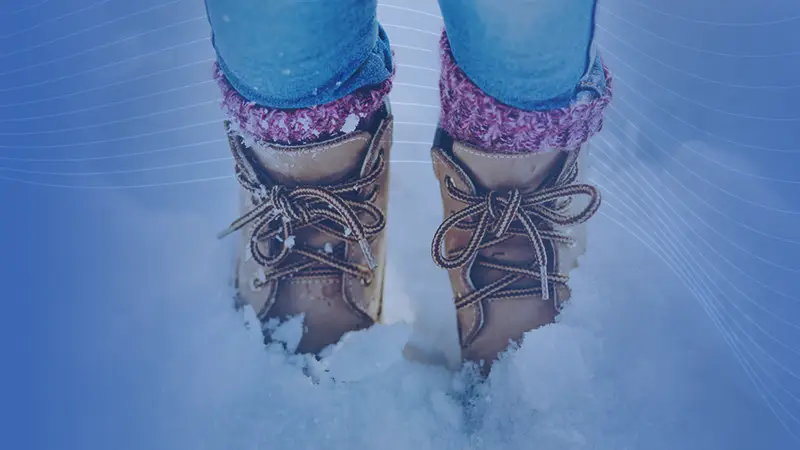Foot Health While Wearing Winter Boots
February 14, 2018

As we’ve all come to experience in the first few weeks of the new year, winter in Central Virginia can be a trying time with cold weather and snow.
While they’re nobody’s favorite accessory in the South, warm boots become a necessity to trudge through the elements come winter time— whether they’re used to run errands across town or to shovel the driveway. Much like summer sandals, boots are just part of the gig when the temperatures start dip.
Not dissimilar to a number of types of specialized footwear, wearing winter boots come with their own distinct risks to an individual’s overall foot health. After getting their wear in the winter, our boots are then banished in hopes that they’ll never be used again in the spring. But when winter rolls back around and the time comes for their use, it is important to make sure the foot has proper time to adjust to the new footwear to avoid inherent risks.
Easing back into boots can be important on a number of different levels. First and foremost, forcing one’s foot into a shoe is never beneficial. Purchasing wider boots becomes a good idea to ensure a roomier, more comfortable fit, eliminating the likelihood of forming calluses or aggravating bunions or hammertoes on the feet.
Furthermore, because the soles of winter boots tend to be flatter than the average sneaker or dress shoe, plantar fasciitis becomes a real danger due to the boots’ lack of arch support. This problem is compounded when taken into account that the probability of acquiring plantar fasciitis increases when wearing unfamiliar shoes, thus increasing the importance of breaking boots back in at a slower pace.
While they may not seem so with the cold weather they are associated with, winter boots also check off all of the boxes when it comes to providing the perfect breeding ground for the bacteria that causes foot and toe fungus, athlete’s foot and foul odors — dark, wet and warm.
Keeping feet dry becomes the key in this scenario. Opting for wool, bamboo, or acrylic socks rather than cotton encourages sweat to wick away from the foot. Using powder or an antiperspirant spray also helps the foot from becoming overheated and sweaty. If the boots become wet, it is important to allow a 24-hour hour period for the boot to dry completely before they are used again.
Even though Punxsutawney Phil announced six more weeks of winter on Groundhog Day, it’s tough to say how much longer winter will last, but taking the right precautions the rest of the way will ensure healthy feet as warmer weather makes its way back to Virginia.